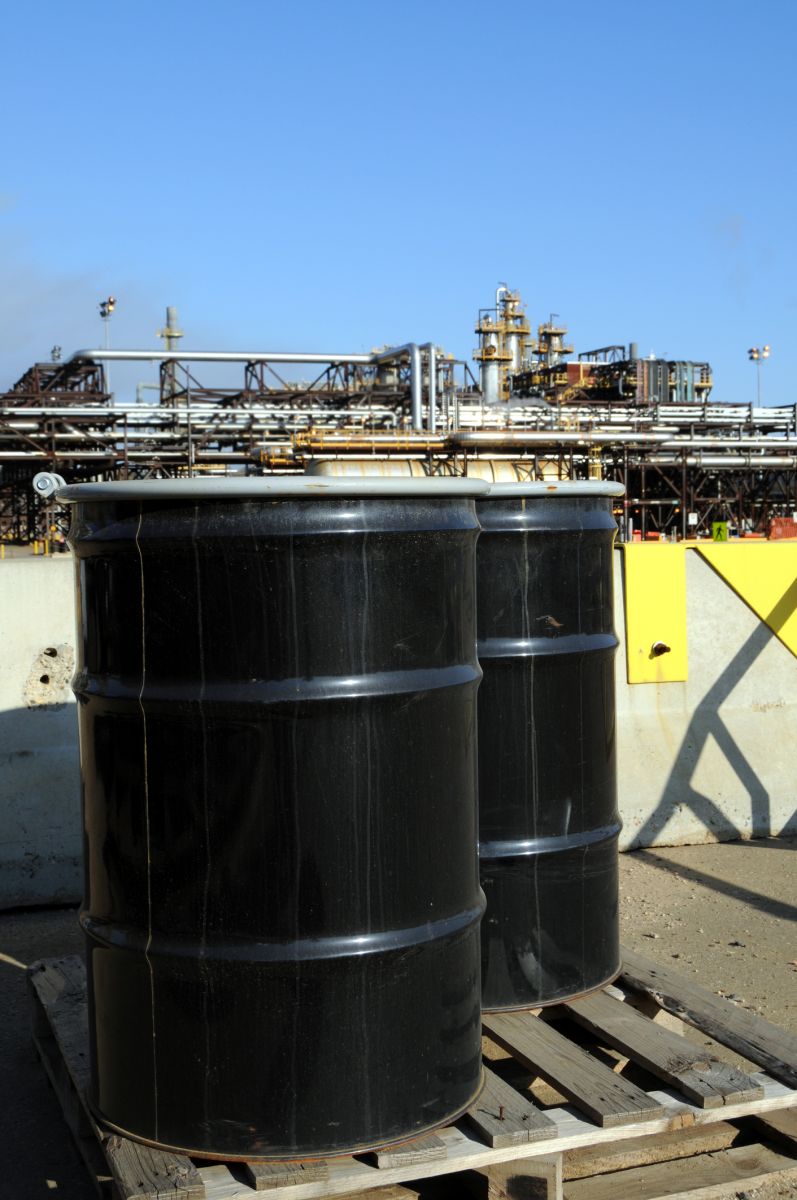- Market Overview
- Futures
- Options
- Custom Charts
- Spread Charts
- Market Heat Maps
- Historical Data
- Stocks
- Real-Time Markets
- Site Register
- Mobile Website
- Trading Calendar
- Futures 101
- Commodity Symbols
- Real-Time Quotes
- CME Resource Center
- Farmer's Almanac
- USDA Reports
Crude Prices Recover as US-China Trade Tensions Ease

November WTI crude oil (CLX25) today is up +0.96 (+1.63%), and November RBOB gasoline (RBX25) is up +0.0291 (+1.60%).
Crude oil and gasoline prices are sharply higher today, recovering some of last Friday's plunge after the Trump administration signaled openness to reaching a trade deal with China. Crude prices also gained after President Trump said he is considering arming Ukraine with long-range Tomahawk missiles, which raises the risks of further disruptions to Russian oil supplies. Today's sharp rally in stocks also improves market sentiment and is supportive for asset markets. Strength in the dollar today is limiting the upside in crude prices.
Last Friday, crude prices sank to a 5-month nearest-futures low, and gasoline plunged to a 4.5-year low following renewed trade tensions with China after President Trump threatened a "massive increase" of tariffs on Chinese goods, citing recent "hostile" export controls on rare-earth minerals. A protracted US-China trade war would weigh on global economic growth and energy demand and is bearish for crude prices.
Cooling tensions in the Middle East have reduced some of the risk premium in crude prices, weighing on crude as it decreases the likelihood of disruptions to the region's crude supplies following the agreement between Israel and Hamas.
Crude prices found support after OPEC+ on October 5 agreed to a 137,000 bpd increase in its crude production target, starting in November, which was less than market expectations of a potential 500,000 bpd boost to production. OPEC+ is in the midst of boosting output by a further 1.66 million bpd to fully reverse the 2.2 million bpd production cut seen in early 2024. OPEC's September crude production rose by +400,000 bpd to 29.05 million bpd, the highest in 2.5 years.
Reduced crude production in Russia is supportive for oil prices. Ukraine has targeted at least 15 Russian refineries over the past two months, exacerbating a fuel crunch in Russia and limiting Russia's crude export capabilities. Ukrainian drone and missile attacks on Russian refineries have curbed Russia's total refined-product flows to 1.94 million bpd in the first fifteen days of September, the lowest monthly average in over 3.25 years.
An increase in crude oil held worldwide on tankers is bearish for oil prices. Vortexa reported today that crude oil stored on tankers that have been stationary for at least seven days rose by +8.9% w/w to 93.96 million bbl in the week ended October 10.
The outlook for higher crude production in Iraq is expected to boost global oil supplies, which is bearish for crude prices. Iraq recently announced that it had reached an agreement with the regional government of Kurdistan to resume oil exports from the Kurdish region via a pipeline to Turkey, which had been halted for the past two years due to a payment dispute. Iraqi Foreign Minister Hussein said that the resumption of crude exports could add 500,000 bpd of fresh oil supplies to global markets.
Crude prices have support from concerns that the ongoing war in Ukraine could lead to additional sanctions on Russian energy exports, reducing global oil supplies. The US proposed that the G7 allies impose tariffs as high as 100% on China and India for their purchases of Russian oil in an effort to convince Russia to end the war in Ukraine.
Last Wednesday's EIA report showed that (1) US crude oil inventories as of October 3 were -4.5% below the seasonal 5-year average, (2) gasoline inventories were -0.6% below the seasonal 5-year average, and (3) distillate inventories were -5.4% below the 5-year seasonal average. US crude oil production in the week ending October 3 rose +0.9% w/w to 13.629 million bpd, just below the record high of 13.631 million bpd posted in the week of 12/6/2024.
Baker Hughes reported last Friday that the number of active US oil rigs in the week ending October 10 fell by -4 to 418 rigs, modestly above the 4-year low of 410 rigs from August 1. Over the past 2.5 years, the number of US oil rigs has fallen sharply from the 5.5-year high of 627 rigs reported in December 2022.
On the date of publication, Rich Asplund did not have (either directly or indirectly) positions in any of the securities mentioned in this article. All information and data in this article is solely for informational purposes. For more information please view the Barchart Disclosure Policy here.